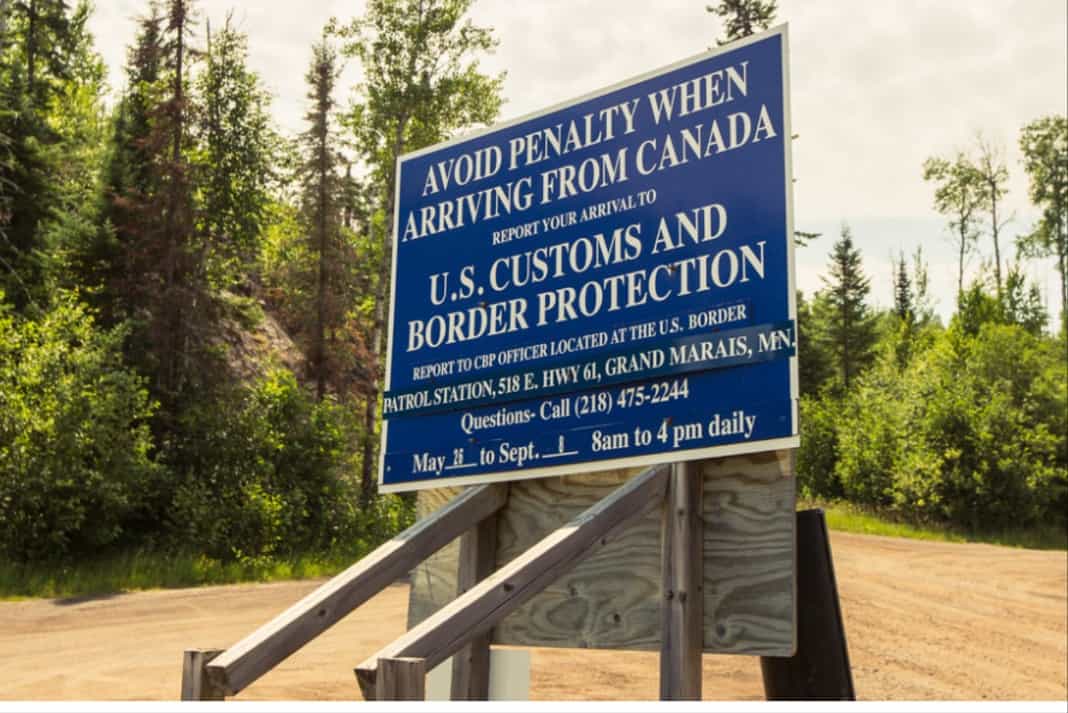In the busiest U.S. Customs and Border Protection sector along the U.S.-Canada border, agents apprehended more illegal border crossers entering the U.S. in fiscal 2023 than they had in the previous 11 years combined.
Swanton Sector Border Patrol agents apprehended more than 6,700 foreign nationals from 76 countries attempting to enter the U.S. illegally from Canada. This represents a 550% increase in apprehensions from fiscal 2022, Swanton Sector Chief Patrol Agent Robert Garcia said.
Despite having far fewer agents and resources than sectors along the southwest border, Swanton Sector agents have been “resolute and determined to hold the line across our 295 miles of border in northeastern New York, Vermont and New Hampshire,” he said.
The sector spans 295 miles of international boundary with the Canadian provinces of Quebec and Ontario, of which 203 miles is on land. The remaining 92 miles of border fall primarily along the St. Lawrence River. The sector is the first international land boundary east of the Great Lakes.
The sector includes all of Vermont, six upstate New York counties and three New Hampshire counties.
According to preliminary data obtained from a Border Patrol agent, Swanton Sector Border Patrol agents apprehended at least 6,704 illegal foreign nationals and 3,745 gotaways. The data excludes Office of Field Operations data. When this data is included, the numbers are higher.
U.S. Customs and Border Protection does not publicly release gotaway data. The Center Square obtains it from a Border Patrol agent who provides it on condition of anonymity for fear of retaliation.
Gotaways is the official CBP term to define foreign nationals who illegally enter the U.S. and don’t turn back to Canada or Mexico. They illegally enter between ports of entry and seek to evade capture. Those in law enforcement have no idea how many there are in the U.S., who or where they are. According to data previously published by The Center Square, they total an estimated 1.7 million since January 2021.
The U.S.-Canada border is the longest international border in the world of 5,525 miles. Unlike the U.S.-Mexico border, there are no border walls or similar barriers separating the U.S. from Canada. Most of the northern U.S.-Canada border is demarcated by rivers, lakes, mountains, ravines and forests. In heavily trafficked areas, Border Patrol agents have erected concrete barricades and boulders to prevent human smuggling, which Garcia refers to as “impedance and denial measures.”
The barriers prevent vehicles from driving through but do not prevent foot traffic. Multimillion-dollar high fences and surveillance equipment used by wealthy homeowners in the northeast and New England provide better protection from intruders than these structures do, officials have explained to The Center Square.
While many miles of the remote northern border remain unpatrolled due to a number of factors, at northern border ports of entry, CBP Office of Field Operations agents have consistently apprehended the greatest number of known or suspected terrorists in the U.S.
In fiscal 2023, OFO and Border Patrol agents apprehended a total of 736 KSTs nationwide – the greatest number apprehended in recorded U.S. history.
The significant majority of them – 66%, or 487– were apprehended at the northern border attempting to enter the U.S. from Canada.
By comparison, 249 known or suspected terrorists were apprehended at the southwest border in fiscal 2023.
Bethany Blankley
Go to Source
Reposted with permission


![Mandela Barnes Said ‘Reducing Prison Populations is Now Sexy’ [VIDEO] Reducing Prison Populations is Now Sexy](https://www.wisconsinrightnow.com/wp-content/uploads/2022/09/Collage-Maker-14-Sep-2022-11.44-AM-265x198.jpg)







![Author Exposes the Tragic Realities of the 2020 Riots & the ‘Gaslighting of America’ [REVIEW] julio roses](https://www.wisconsinrightnow.com/wp-content/uploads/2025/11/MixCollage-21-Nov-2025-02-08-PM-8145-265x198.jpg)

